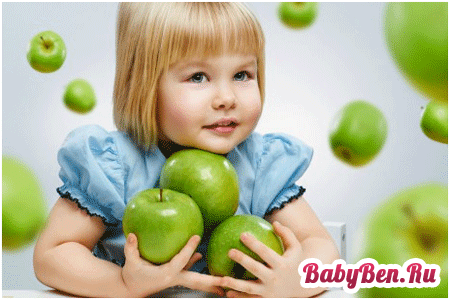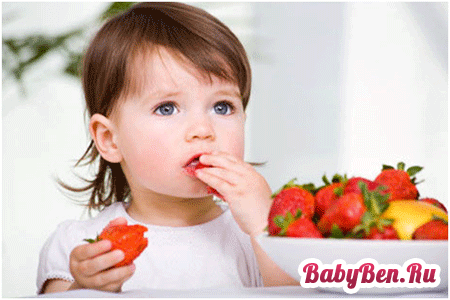
Diet with allergies in children must correspond to the child's age and consist of a minimal set of products provoking an allergic reaction. Allergies is a common disease that can even be observed in young children.

The reason for the development of allergies is often food with the content of allergic substances. These products include:
- fish caviar, seafood;
- dairy products, cheese products;
- egg yolk;
- smoked meat or smoked smoky cooking;
- vegetables in marinade;
- spices, spices, sauces;
- citruses, red and orange berries;
- red paprika, tomatoes, beets, patissons, spinach, celery;
- dried fruits, honey, nuts;
- candy with filling, cocoa;
- yogurts, juices;
- products with preservatives.
Allergic reaction is manifested after eating food consisting of dyes and nutritional supplements, reinforcing odor and flavoring product quality. To identify allergen products, parents should use a number of specialized diets:
- hypoallergenic (nonspecific);
- eliminational (or exclusive);
- an alternating diet.
The content of the article
Hypoallergenic diet
The food caloric content and the content of elements in the everyday diet divides products-allergens into two groups. The first includes products that can easily be excluded from the child's diet, this is: berries, cocoa containing drinks, honey, chocolate. The second group of allergic products are allergens, the concentration of which can be reduced by applying thorough thermal processing. These include dairy products (milk) and eggs.
It is not recommended to use food products with substances that reduce the protective functions of the stomach and intestines. These include wheat bread, semolina, fatty pickles, cottage cheese. Reduced the level of exposure to hypoallergens in products can be used by exposure to their vapor processing or cooking.
It is strictly forbidden to children to use products with preservatives and food additives (crackers, chips, canned food). With an allergy that occurred, it is necessary to exclude food from the diet of the child comprising trace elements, and the vitamin complex is recommended as their replenishment in the body.

Eliminate diet
This type of diet with allergies in children is created in connection with the hypoallergenic characteristic of the body. With this diet there is an opportunity to determine which products the body responds particularly acute. After the allergens are defined, they are absolutely removed from the Child menu. With the exception of allergens, it is necessary to observe the reaction of the body, the condition of the skin and the behavior of the child.
It is necessary to make notes, which products are used, and how the kid feels after them. Two weeks later, it is possible to introduce the products to the diet, which was excluded earlier, and post the child's well-being. To accurately determine the allergic food product, every three days enter in the Child menu by one excluded product. Next, based on these factors, select an individual diet.
Alternating diet
The diet consists of introducing all the necessary products that do not contain preservatives and dyes into the diet. It is used with non-agitated forms of allergies, in which there is a need to completely abandon the use of specific products.
The purpose of this diet is that when allergic appears to a separate product, it can be included in the diet, but only every three days. Compliance with the diet in the occurrence of allergic reactions in children requires time to draw up a dietary diet and confirmation by his doctor. The whole diet is based on an individual approach, taking into account the use of different kinds of products.

Remember that if your kid's body reacts very sharply to some product, to avoid unpredictable consequences of its use, it is better to exclude it from the children's diet. After all, caution still did not harm anyone.
